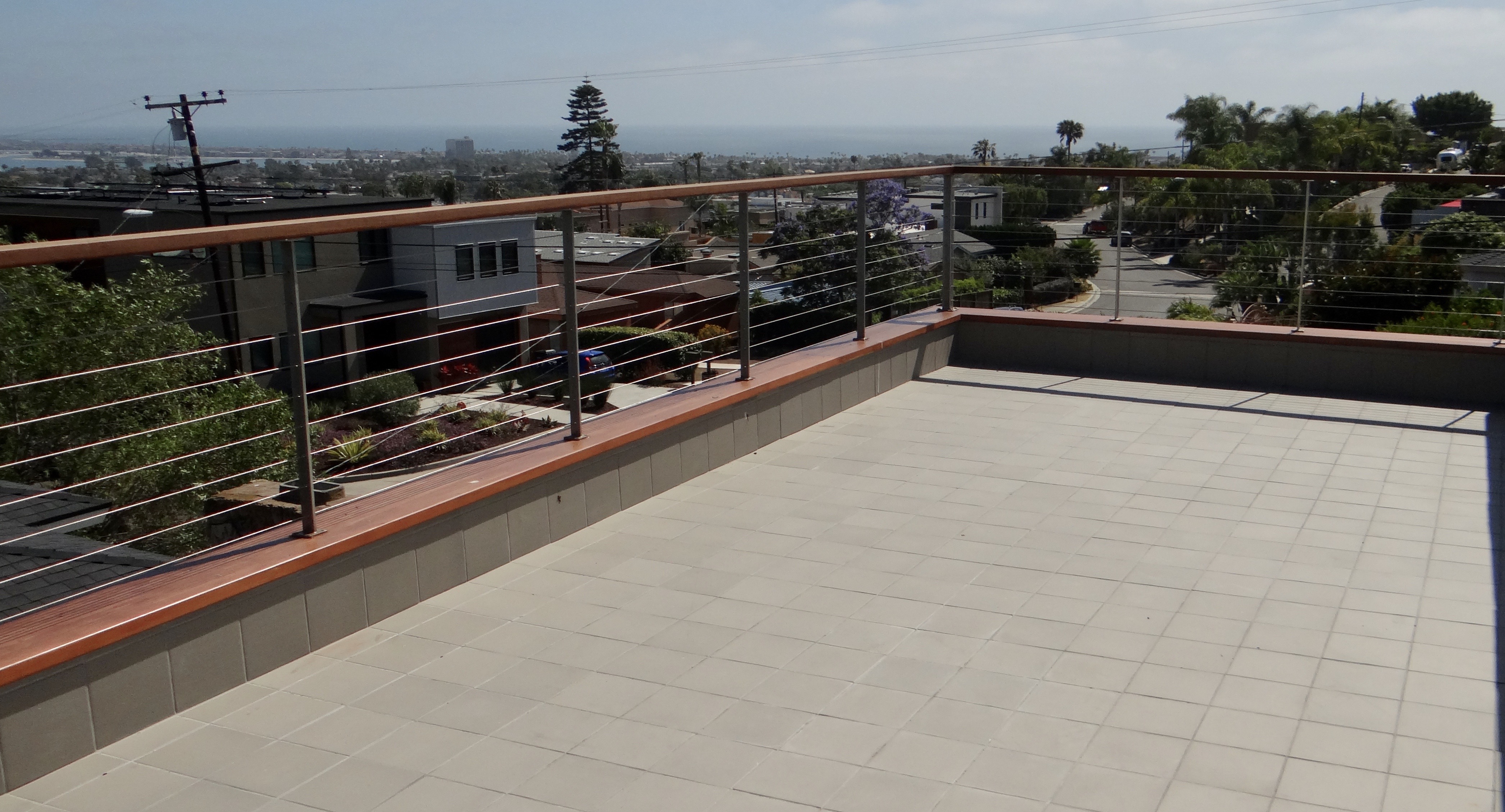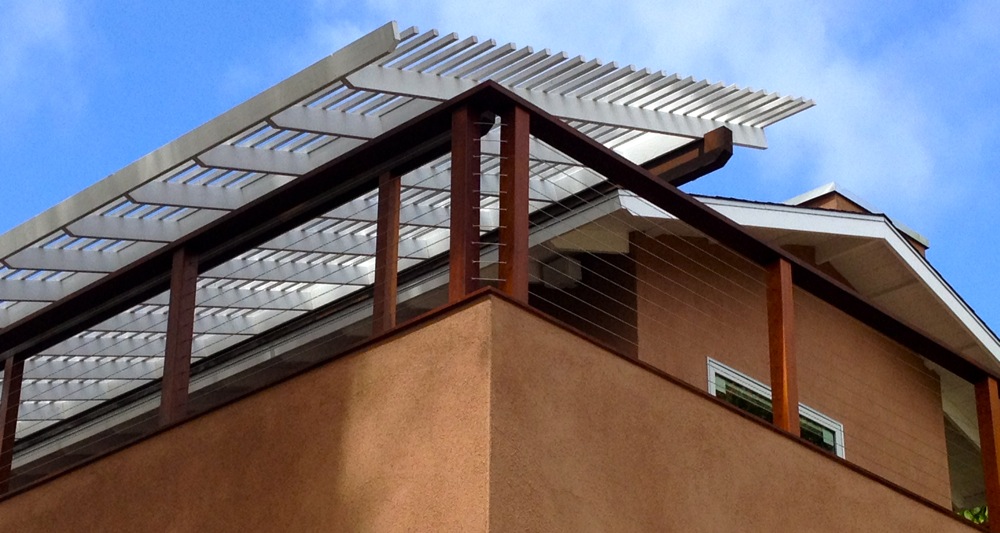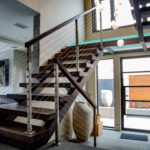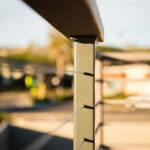Securely mounting your deck railing posts is one of the first steps in any successful deck railing installation. From traditional picket style railings to modern cable and glass alternatives, surface mounted deck posts will likely be an option. In this article we will discuss some common applications that require top mounting, as well as some recommendations for surface mounted deck posts.
Top mounting the posts in any type of railing system will require a “surface mount.” This can be done in several ways and on top of different substrates; however the methods can vary. Roof top decks, parapet walls, and interior pony walls are all examples of situations where surface mounting is usually required. Decks and concrete patios are also surface mounted post candidates, but offer more opportunities for fascia mounted posts as well.
Here are some of the most commonly encountered attachment methods for surface mounted deck posts :
- Dowels or rods (for setting wood posts)
- L Brackets (wood/steel)
- Post Bases and Sleeves (wood/composite)
- Welded Base plates ( Steel/Aluminum/Stainless)
- Mechanically fastened base plates (most commonly aluminum posts)
Surface Mounting Wooden Deck Posts
Interior railings that utilize wooden spindles are commonly attached to surfaces by means of dowels, rods, pins, or even by toenailing in some cases. However, for modern railings like cable and glass, these methods are not so common. Glass railings are heavy, most often requiring steel posts or a base shoe for attachment. Cable railing systems require very rigid frames in order to sustain tremendous tension loads. In either case, the use of welded steel “buckets”, “shoes” or “sleeves” is an effective way to handle this type of mounting scenario.
Wooden post bases or buckets that are designed for structural applications should be bolted to the intended surface with a minimum of 3″ structural embedment. Additionally, the selected post mount should secure the posts in the loading direction like a jacket, bolted to the post itself and the substrate. A properly mounted post should be rigid without top support. Slipping or lifting of the post must be prevented when the post under lateral or tension loat, so a tight fitting base is necessary for proper function of the posts and railing frame.
-How to shim railing posts on the deck surface-
Wooden and Composite shims can be a simple and effective way to level your base plates and plumb your deck posts. If angles are too steep; the use of angled base plates or angled post mounts may be necessary. Installers can simply install the shims underneath base plates or post mounts to level the bases. Minor shimming can be easily hidden by caulking around the edges of steel base plates. This can also assist in preventing water intrusion or accumulation underneath base plates or mounts as time progresses. Hiding a post base can be accomplished by fabricating a post “skirt” out of the selected timber to match the posts.
The Best Way to Attach Surface Mounted Deck Posts
Our preferred method for surface mounting any steel railing post is by utilizing a welded base plate. When it comes to connection strength and durability; a welded and bolted connection is far superior to any mechanical connection.
If surface mounting a steel or aluminum post is needed, try and select a welded post system. When a top mount is necessary for wooden post systems; try and locate a post mount that is approved or custom made for “non top supported” applications.
If you have questions about what type of railing post is right for your application, give us a call at 844-277-7327 or visit the quote request page. Our sales associates can review your specific project options and pricing, as well as custom solutions that may be available to you.






